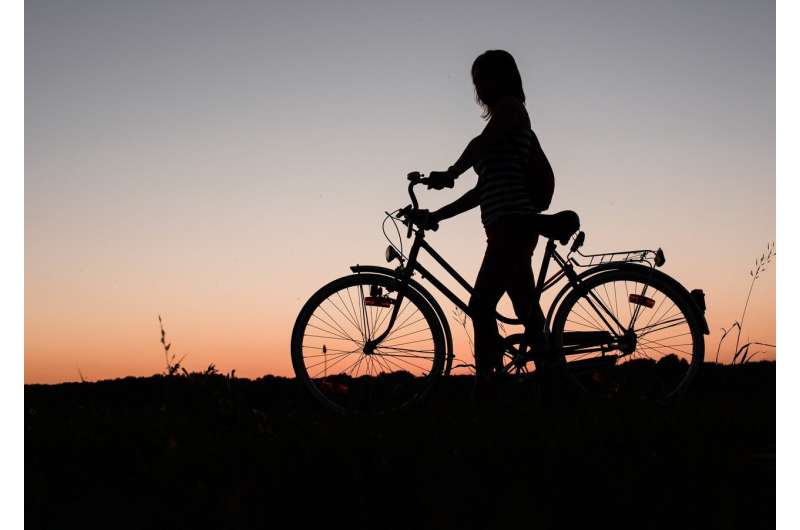
The gender gap in urban cycling worldwide is staggering. Most cyclists are young to middle-aged men—hence phenomena such as "lycra cyclists" or "mamils."
In Anglo countries, including Australia, only one in four commuter cyclists and one in three recreational cyclists are women. This is not healthy. While cycling is good for everyone, women stand to gain more because they typically exercise less than men.
Women are also at higher risk of osteoporosis, arthritis, anxiety, depression and various autoimmune diseases. So they need more of the type of exercise like cycling that builds bone density, strengthens muscles, helps manage weight and improves mood.
So what's stopping women from cycling? Our new research analyzed more than 200 million bike-sharing trips in ten cities worldwide, including Brisbane, over a period of 14 years. We found that slopes, darkness and bad weather affect numbers of female cyclists more than male cyclists.
The expectations of female users of bike-sharing schemes are probably similar to the expectations of female cyclists in general. Our findings point to a number of solutions to close the gender gap in cycling.
Women face specific barriers to cycling
Gender-specific barriers to cycling range from lower confidence to lower strength (on average). Sprawling cities, which create long distances between destinations, and a lack of high-quality cycling infrastructure are known to deter women from cycling.
However, some barriers are due to the natural environment.
For example, women may avoid cycling or choose to cycle only in the daytime. When it's dark, they fear assaults or victimization. This is a problem in cities such as Brisbane and Sydney where it gets dark by 5pm in winter, so women are reluctant to cycle home after work.
Many workplaces have dress codes and some expect women to wear skirts, heels and makeup. As a result, these employees may avoid commuting by bike in rainy, cold or humid weather, especially where end-of-ride facilities, such as showers, are missing at work.
Cycling infrastructure is often located on floodplains, such as along rivers. In flood-prone areas, such as much of eastern Australia, women may avoid cycling in wet weather due to fear of slippery, flooded roads and paths.
Sun exposure along uncovered paths can be a deterrent too. Women are more health-conscious and bear more responsibility for their family's heath and well-being.
This article is republished from The Conversation under a Creative Commons license. Read the original article.![]()
Citation: Bad weather, hills and the dark deter cyclists, particularly women. So what can we do about it? (2024, June 5) retrieved 5 June 2024 from https://techxplore.com/news/2024-06-bad-weather-hills-dark-deter.html
This document is subject to copyright. Apart from any fair dealing for the purpose of private study or research, no part may be reproduced without the written permission. The content is provided for information purposes only.
